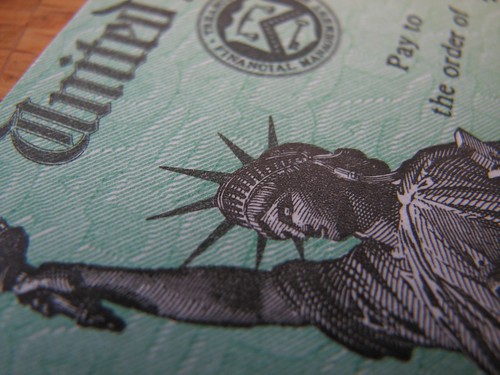Consider these five great projects that cost around $1,000 if you decide to invest a tax refund in your home this year.
1. It all comes out in the wash
It might not sound sexy, but equipping your laundry room with a new washing machine will pay off immediately on your utility bills. Today’s high-efficiency washers use less water per load than standard top-loaders, so you save on your water and water-heating bills. Replacing a washer made before 2000 with an Energy Star model can save a typical homeowner as much as $135 annually.
A high-efficiency top-loader costs between $700 and $900. A stylish and even more efficient alternative is a front-loading washer. Prices for front-loaders start at about $750. As a bonus, either high-efficiency option could net you an appliance rebate from the manufacturer, your local utility company, or your state government.
2. Make your mortgage disappear
A mortgage, especially one that spans three decades, can seem insurmountable. Yet it’s possible to use small sums of money over time to make a big dent in the principal. The net result is saving thousands of dollars on interest and shortening the time you spend paying off the home loan.
Let’s say you take out a $250,000 mortgage. The rate is fixed for 30 years at 6%. Your monthly payment would be $1,500. Over 30 years, you’d pay a total of $540,000. But if you pay an extra $100 per month–$1,200 per year–you’d pay off the mortgage four years early and save $52,000 in interest. Use a mortgage calculator to run your own numbers.
3. Where there’s no smoke, there’s fire
Do you dream of curling up in front of a roaring fire, yet your home lacks that one essential ingredient–namely, a fireplace? Don’t fret. Your dream can become reality at a surprisingly affordable price. Ventless fireplaces offer the ambiance of the real thing without the need for a chimney or flue to vent smoke outdoors.
Ventless fireplaces, which exhaust small amounts of combustion gases inside the home, can run on natural gas, propane, electricity, or flammable gel. At between $2,000 and $6,000, including professional installation, gas units are pricey. More budget-friendly is an electric ventless fireplace that starts at $1,000. All you need to do is plug it in. Gel-fueled fireplaces are in the $300 to $700 range, with no professional installation required. A gel canister that’ll burn for two-plus hours costs $3.
4. Don’t knock it ’til you try it
A new entry door can do wonders for a home. Not only can it enhance curb appeal and security, but the right door can lower utility costs too. An energy-efficiency exterior door can shave as much as 10% off energy bills. Plus, if you install an eligible door in 2011, you can claim a federal tax credit worth up to $500, excluding installation charges.
Wood and fiberglass doors are usually the most expensive options, but you can get a steel entry door installed in a couple of hours (assuming no surprises) for about $1,200. The money you get back from the tax credit will reduce this cost. As a bonus, Remodeling Magazine estimates that a $1,200 steel entry door replacement project actually will add an incremental amount of value (102%) to your home.
5. You take the high road, I’ll take the slow road
Don’t let your property line limit your spending plans. Some small investments on your part can benefit an entire neighborhood, which not only improves livability but can also increase property values. Take, for example, the speed hump, a raised mound of pavement on a residential street designed to slow lead-footed drivers.
One traffic-calming study found that 12-foot speed humps reduced average speeds by 22% and the average number of traffic accidents by 11%. You’ll need to work with your local government to have a speed hump installed, but offering to foot the bill can grease the wheels of bureaucracy. Basic speed humps start at about $1,000 apiece. Your share will be less if you convince neighbors to chip in.
Mike DeSenne is the money and work editor with AARP.org and a former executive editor of SmartMoney.com. He likes to do his taxes by hand, much to the dismay of his accountant.
Visit HouseLogic for more articles like this. Reprinted from HouseLogic with permission of the National Association of REALTORS. Copyright 2011 All rights reserved.
Thank you for reading the First Weber Wisconsin real estate & Wisconsin living blog for information on investing your tax return into your house.
photo credit http://www.flickr.com/photos/mark_w/2400345920/
